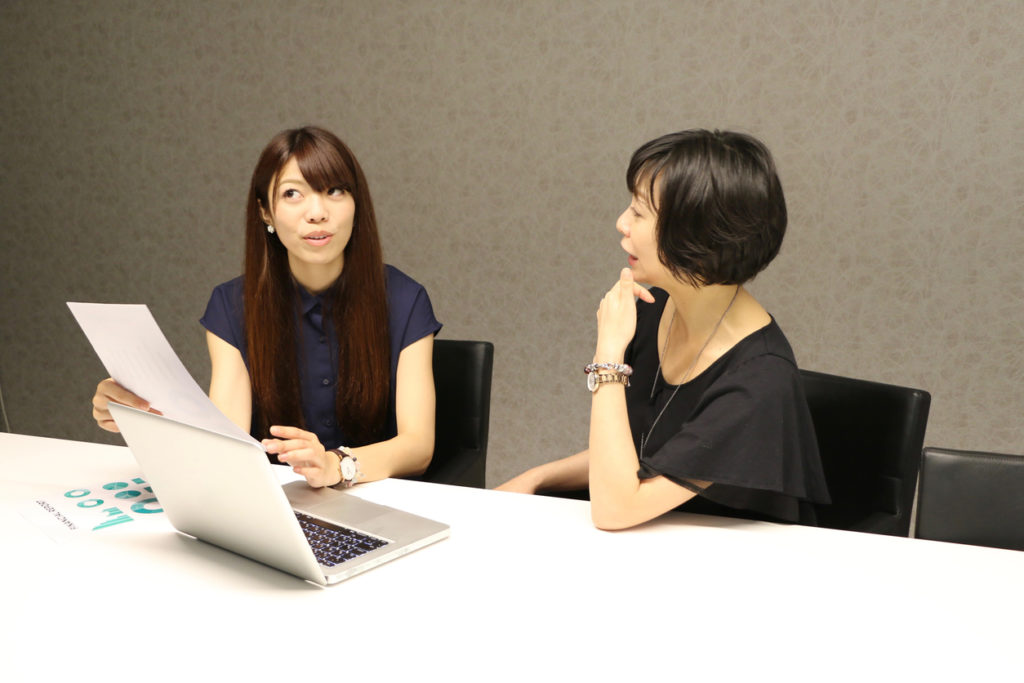7 Ways To Master The Art Of Polite Conversation In Japan
How To Keep Talk Flowing In the Land of Wa
Use these seven strategies to oil the wheels of conversation in Japan, whether you’re speaking in English or Japanese.
If you’re like me, a large part of the joy of conversation comes from the ruffle-and-tumble exchange of thoughts and the joint race to the next new idea or twist in the discussion. But Japanese conversation tends to be a more sedate affair, at least outside your core group of best buddies. As a woman, here you are also expected to be polite and sensitive toward others and be able to express this through communicating. And while back home, we are more likely to just start a conversation with “Hey, lady!,” in Japan, you need to pass through some stages before you get there (if you ever do.)
If you’re struggling with initiating and keeping polite conversations here in Japan, (as we all have at some stage in our stay in Japan), check out the following tips which will help you make the right moves in this slower groove.

1. Use “Aizuchi”
You have surely noticed that an indispensable part of conversational Japanese is grunting – or to put that more accurately – giving verbal responses to the speaker during a conversation to show that you understand what they are saying. Called aizuchi (相槌) in Japanese, this practice is crucial for oiling the wheels of conversation, particularly on the phone. Women usually use a more melodious “hmm” or a long, soft “hai” (yes), or phrases such as “so desu ne,” literally “that is so,” or “taihen desu ne” (that’s tough), or “ii desu ne” (that’s good), with “ne” being added to show empathy. If you are in a formal conversation or being given instructions, the best aizuchi responses are “hai,” or “eee” (not, “eh?” though — just a prolonged, toned-down eeee) which you can slot in wherever necessary again and again, and a “wakarimashita” (I understand) to end with.
2. Be patient — even if it’s a long talk
You’ve been in those kind of conversations where at some point you start wondering where this whole thing is going. But before you start wanting to fast forward, take a breath and remind yourself that just like you would do in other countries, it’s better to avoid speaking over others. This is a basic principle of minding one’s Ps and Qs in any language, but while talking over someone in English is often a sign of a vigorous conversation, in Japan it is often seen as disrespect for the speaker. So do your best by staying patient and pretend you’re listening — or excuse yourself to go to the restroom!
If something suddenly crops up and prevents you from hearing the speaker out, apologize and ask them to wait by saying “Gomennasai. Chotto matte kudasai” (ごめんなさい。ちょっと待ってください). When you are able to return to the conversation, apologize again and ask her to continue the previous topic: “Gomennasai. Sakki no hanashi wo tuzukete kudasai” (ごめんなさい。先の話を続けてください).
3. Listen to the end of the verbs
Japanese is the original Star Wars Yoda-speak, as it places negatives at the end of the sentence. (Yup, Yoda is a Japanese family name.) So “I don’t think so” literally comes out as “I so think not,” — Watashi wa sou omoimasen (私はそう思いません). Consequently, if you don’t hear the speaker through, you will get them all wrong. If you miss the end of someone’s sentence, repeat the final word, pausing just before where the negative fits in so as to prompt the speaker to fill in that gap: So omoima-? (そう思いまー?)

4. Acknowledge by paraphrasing
Confirmation is key in Japanese communication, which could be why business meetings here tend to get too long. But it’s essential in a Japanese setting in order to make sure that everyone’s on the same track. When the speaker has finished, acknowledge what they have said either via a simple paraphrasing or use one of the phrases just above. It is especially important to acknowledge the speaker’s ideas before you either shift the conversation to a different topic or throw in a “but.” Without doing so, it might look like you aren’t interested in what the person just said or appear that you blatantly disagree with what you’ve just heard.
You can acknowledge what someone has said with a phrase such as “I think so too” (Watashi mo so omoimasu, 私もそう思います). A somewhat dry version of “I see” is “naruhodo” (なるほど). A softer version would be “So desu ka” (そうですか) — which is literally the query “Is that so?” instead delivered with empathy as a rhetorical question. Or you can respond to the speaker’s feelings by saying “That’s a difficult/sad/happy thing” (Sore wa muzukashii/kanashii/ureshii koto desu ne. それは難しい/悲しい/嬉しいことですね).
5. Be emphatic
When answering questions, a simple yes or no is not enough in Japanese: it sounds mechanical and unconvincing. Instead go with “Yes, that’s right” (Hai, so desu, はい、そうです). Or “Yes, I like it” (Hai, suki desu, はい、好きです). To answer in the negative, try “No, not yet” (Iie, mada desu, いいえ、まだです). Or “No, unfortunately” (Iie, zannen nagara, いいえ、残念ながら).
Likewise, when saying thank you, emphasize your arigato by adding an emotional comment like “It looks delicious” (Oishiso desu, 美味しそうです) or “I’m so pleased” (Ureshii desu, 嬉しいです).
6. Avoid overly personal questions unless brought up
Perhaps more so than in many cultures, Japanese don’t like having their shortcomings revealed and consequently dislike overly personal questions or blunt ones like ‘Why?,’ unless they bring out the topic by themselves. Especially when you’re still not very close, avoid asking specific questions such as “What company do you work for?,” “Which station do you live close to?” or “Do you live alone?” Instead, you can ask, “What field do you work in?” (Dono gyoukai de hataraitemasuka?” どの業界で働いてますか?”) , “Which part of Tokyo do you live in?” (Tokyo no dokorahen ni sundemasuka? 東京のどこら辺に住んでますか?), and “Do you live with your family?” (Gokazoku to osumai desuka? ご家族とお住まいですか?) These are all indirect ways to ask what you want to know yet avoid being overly direct.
Japanese don’t like having their shortcomings revealed and consequently dislike overly personal questions.
You can further master avoidance of ‘why?’ by changing the question into a statement. A friend of mine did this just recently when she came over and saw that we keep our daughter’s school bag in the living room. Instead of asking me why it’s there, she said, “That’s a good idea to keep your daughter’s schoolbag in the living room.” The magic of this approach is that it prompted me to respond with my true feelings: “It’s probably not good, but we can’t find a better spot for it at the moment.” It’s a technique that doesn’t add pressure on people — if the person you’re talking to doesn’t feel comfortable responding, they can just let go the topic and move on. It was just a statement after all.

7. Ask the obvious
Asking the obvious is a very common practice here. It’s an approach (yes, often an uncomfortable one to people not used to the Japanese culture) used to show the listener that one isn’t assuming too much. It can be an effective way to start a conversation because it encourages the respondent to clarify or explain but also allows them to give as little or as much information as they feel comfortable with.
Over the years I have become used to this approach when initiating small talks. Recently, I met a neighborhood boy and his mother on the bus coming home and asked him if he had been out for the day: Kyo wa odekake deshita ka? (今日はお出掛けでしたか). The best answer to that question is “Well, duh. That’s why we’re coming home on the bus in the evening.” But, typically, his mother smiled and kindly gave us the culturally appropriate answer: “We’ve been out shopping.” (Kaimono ni ittekimashita, 買い物に行ってきました).
And that opens up for another chance to continue the talk — asking (or just throwing a statement) that you believe they found something lovely to take back home…
What strategies do you use to get a conversation flowing in Japan?














